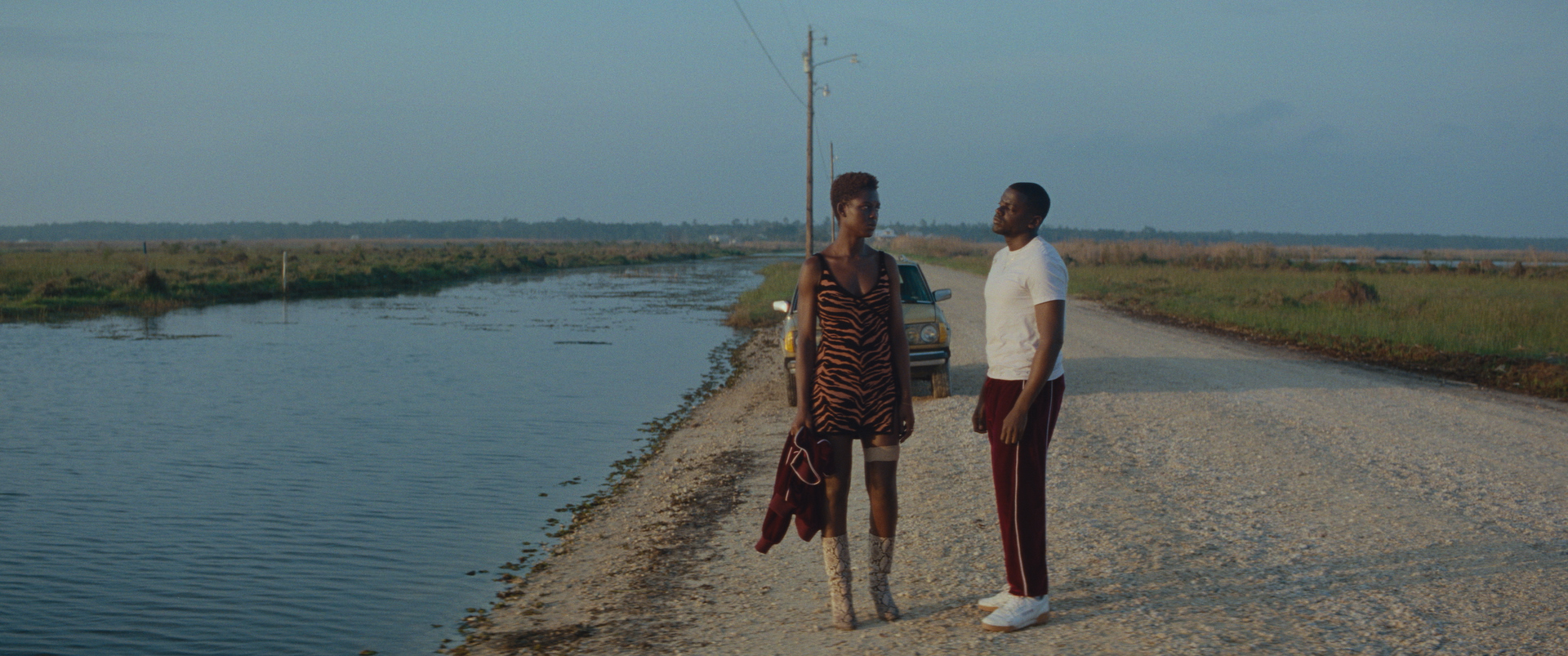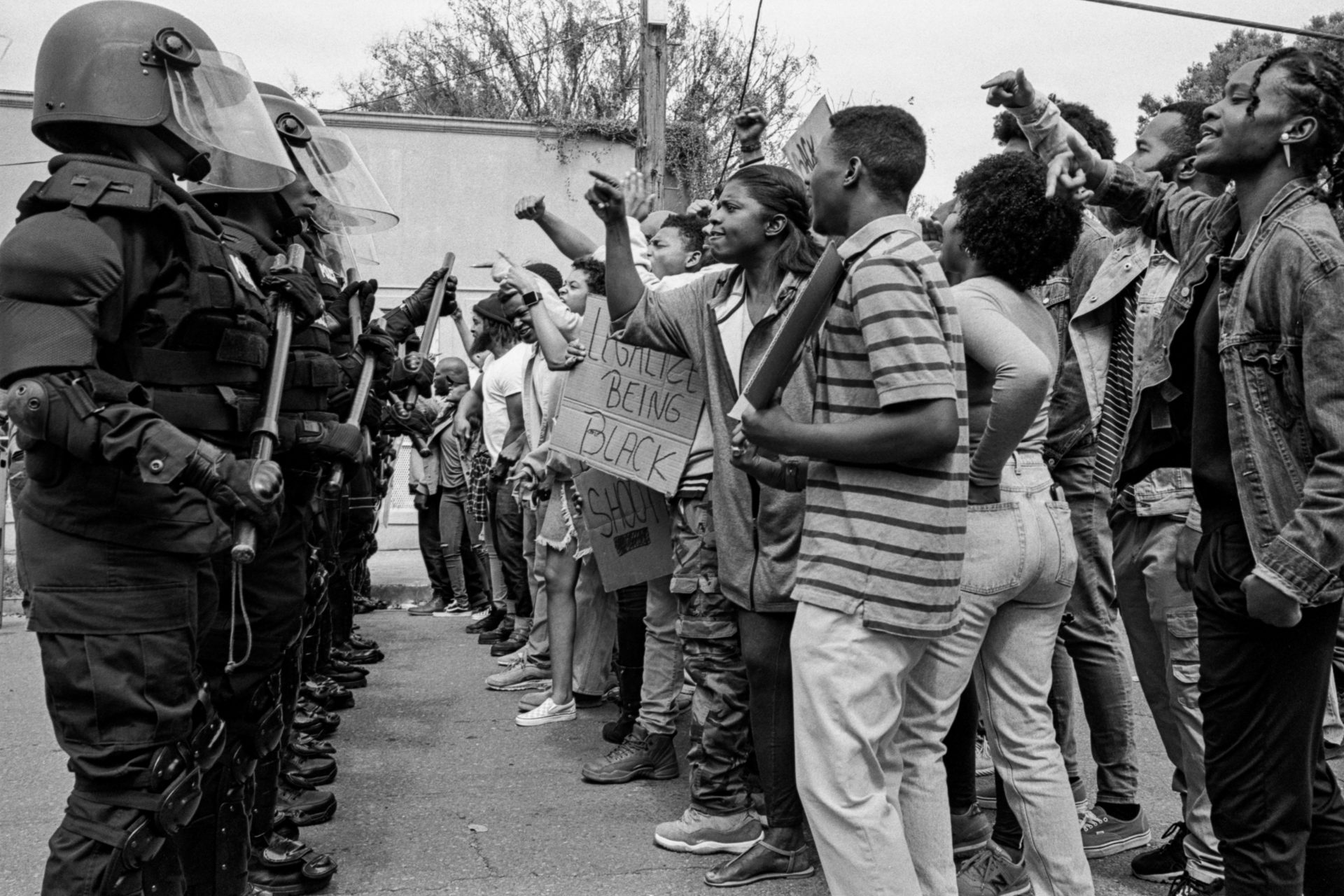By Soraya Nadia MacDonald, The Undefeated
Spoiler alert: This review discusses plot details of Queen & Slim.
In their quest to make black people so real and full of humanity that “maybe they’ll stop killing us,” screenwriter Lena Waithe and director Melina Matsoukas have delivered Queen & Slim, a heartbreaking modern masterpiece destined to become an American cinematic classic.
The film, Matsoukas’s first feature, begins in Cleveland, the same city where a police officer shot and killed 12-year-old Tamir Rice in 2014. The titular couple is in the midst of a mediocre date in a diner where the grim lighting acts as a form of fluorescent birth control. An Edward Hopper painting this is not.
Jodie Turner-Smith plays Queen as a haunted, haughty defense attorney who’s just witnessed the execution of client. She’s hoping to momentarily ease her grief by meeting a man who’s been parked in her Tinder messages for a digital eternity.
“I sent you a very well-crafted message three weeks ago,” Slim (a magnificently wounded-yet-affable Daniel Kaluuya) says to an unimpressed Queen. As she’s picking at a sad salad dominated by iceberg lettuce, Turner-Smith wears the unmistakable expression of a woman who realizes she would have been better off staying home with Netflix and a glass of wine. Slim, well aware of the vibe, proceeds anyway as though he still has a chance.

Queen shuts down the possibility of sex, and Slim gives her a ride home. Before their mild dislike has a chance to harden into contempt, though, a police officer pulls Slim over for failing to signal a lane change. He then proceeds to search the car for contraband that simply isn’t there. It’s late, and aside from the hostile negotiations between officer and presumed criminal, the road is silent.
When the officer shoots Queen in the leg after she dares to ask why Slim is being arrested, blood begins to seep through her white suit. She collapses onto a pile of dirty snow. The night is quiet except for the sound of the bullet from officer’s Glock, and just as quickly as the trigger is pulled, the relative silence resumes. The only noise is the scuffle that continues between Slim and the now almost rabid officer, and then finally, another gunshot, which sends a bullet into the officer’s neck.
Queen and Slim decide to head for New Orleans to see Queen’s Uncle Earl, played by Bokeem Woodbine. Woodbine turns in a performance that only solidifies his status as the most underappreciated actor in America, this time as a man in perpetual mourning, who comfortably dwells in the purgatory between legal and extralegal, and who may be running a brothel out of his house.
As they abscond in panic, first with Slim’s car, then a Kentucky sheriff’s pickup truck, then a Blue Pontiac Catalina, and finally an old, baby-poop-brown Mercedes, Queen and Slim drive through an America that is poor and rural and black.
It’s an invisible America that rarely gets captured on the big screen with the sort of grace Matsoukas affords it, a black America of single-lane country roads and trailer parks, honky-tonk dives and middle-of-nowhere garages.
“You’re safe here,” an Alabama barkeep whispers to Slim as he and Queen chart their highway odyssey across a modern-day Underground Railroad of the South. For Queen and Slim, the images of possibility, of Assata Shakur, and of freedom from extradition sharpen the closer they get to Miami. Across a “large body of water,” sanctuary beckons in Cuba, if only they can make it there.
The obvious comparisons present themselves easily enough: Thelma & Louise, Bonnie and Clyde, Set It Off. But Matsoukas has spent more than a decade crafting a style all her own as a music video auteur with a talent for helping recording artists, especially women, visually articulate their full selves. Matsoukas was one of several directors for Lemonade, the film that accompanied Beyoncé’s album of the same name, including the video for “Formation.”
It’s no accident that the Southern Gothic New Orleans of Queen & Slim feels as though it takes place in the same universe as “Formation,” awash in greenery, stubbornly overgrown and harboring secrets of a violent past and present. Matsoukas, who has worked repeatedly with Beyoncé, also directed the trailer for On The Run, the singer’s first joint tour with her husband, Jay-Z.
For years, ever since they released “’03 Bonnie & Clyde,” (the video for which Matsoukas did not direct) Bey and Jay have darted in and out of the pop culture imagination as a gangster and ride-or-die chanteuse, side-by-side, their devotion to each other never in question. That image has always been heavily and deliberately stylized to delineate it from reality. It’s Hollywood violence, one that calls on a murderer’s row of A-list celebrity friends to play dress-up for a four-minute short film.
Matsoukas quickly erases the possibility of lazy parallels to On the Run with the first frame of Queen & Slim, replacing Hollywood glamour with midwestern grit and a deliberate, unsettling realism. The director’s confident patience guides the pacing of Queen & Slim, allowing both the film and the relationship between its titular characters to unfold organically, even as the stakes of the picture are established within its first 15 minutes.

The music grows louder, more frequent, and more comfortable as the possibility of a liberated future comes into focus. The conversations between Queen and Slim become more natural and less clipped. Compassion for one another reluctantly begins to seep out as the dialogue drifts from simply escape and survival to lighter fare, such as the eternal debate over the merits of Fat Luther versus Skinny Luther. As the music blossoms, like a tulip slowly unfurling in the presence of sunshine, so does a love story. The intimacy between Queen and Slim doesn’t come immediately in the panic of fight-or-flight. They bicker, they make poor decisions (which makes sense, seeing as neither has experience running from the law), and they quietly simmer with loathing and impatience as they realize their fates are entwined.
The reward for such patience is true, earned tenderness that swells when Queen finally reveals the details of her mother’s death. Waithe and Matsoukas lead viewers, tense with equal parts dread and hope, to an anguishing emotional cliff. We’ve fallen in love, too, with Queen, Slim, their imperfections, their moments of shared laughter and brief snatches of ecstatic freedom. The closer they draw to Miami, the more we start bargaining with what we know is inevitable, even if we don’t want to admit it.
It’s not until the final moments of the film that we learn the duo’s real names. It happens once they’ve ceased being people and become cable news avatars for another exhausting national debate over race and police violence. America will officially blame and posthumously prosecute Angela Johnson and Earnest Hines for their own deaths. The passionate defense attorney who lost faith in a legal system that executes innocents and her fateful Tinder date-turned-road-Romeo likely will be characterized, in the first draft of history, as “no angels.”
But to their black family of millions, who hoped against hope for emancipation, they ascend homeward as Queen and Slim.





